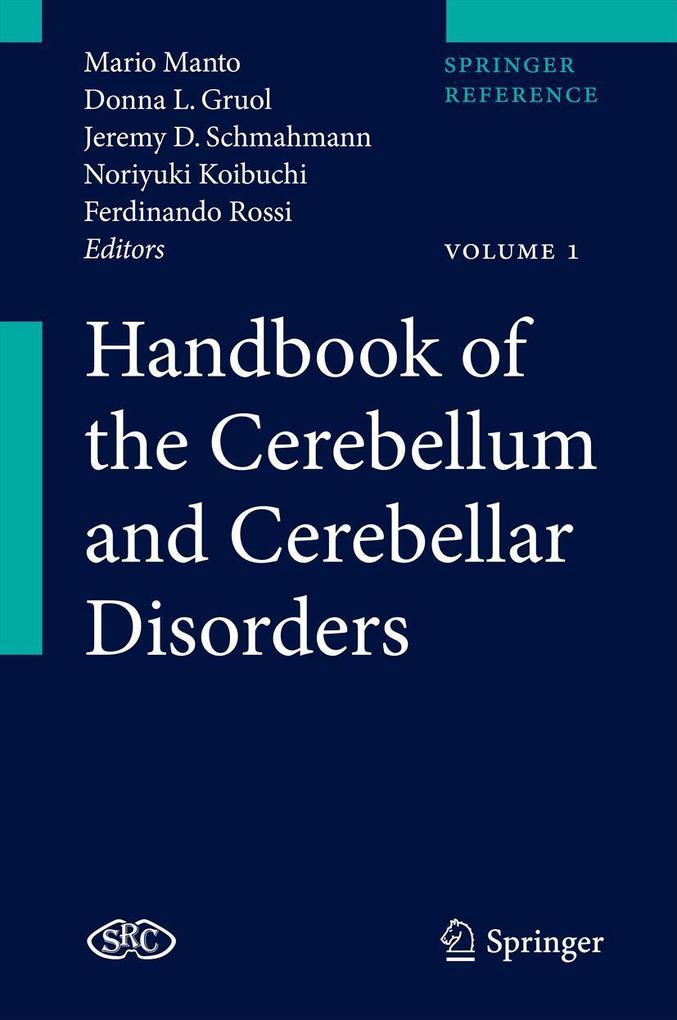
Zustellung: Mo, 26.05. - Fr, 30.05.
Versand in 1-2 Wochen
VersandkostenfreiBestellen & in Filiale abholen:
This volume provides a self-contained resource of information explaining cerebellar disorders and their pathogenesis. The text presents up-to-date information relevant for basic science, which is and also suitable for clinical activities.
Our knowledge of cerebellar functions and cerebellar disorders, called ataxias, is increasing considerably. Studies of the cerebellum are now a central focus in neuroscience. During the last four decades, many laboratories worldwide have dedicated their research activities to understanding the roles of the cerebellum in motor control, cognitive processes and biology of mental processes, behavioral symptoms, and emotion. It is now accepted that the cerebellum acts as a cognitive operator in learning, perception, and attention. Moreover, major improvements in our assessment of in vivo cerebellar architecture using imaging techniques have occurred. A typical example is the accurate description of cerebellar anatomy during fetal development with MRI, a progress which has direct impacts on patient care. These advances have been associated with discoveries of new clinical disorders, in particular in the field of genetic ataxias. More than 20 new genes have been identified these last 10 years. Only for dominant ataxias, more than 30 diseases have now been unravelled. The number of ataxic disorders will increase with aging, the cerebellum being the structure of the brain with the most important loss of neurons with age. More than 300 different cerebellar disorders are encountered during daily practice, but we are missing a single source of information explaining their pathogenesis. Despite the immense amount of knowledge acquired about the cerebellar circuitry these last years, a large book covering the neuroscience of the cerebellum is missing. The goal of this endeavour is to bring up to date information relevant for basic science and also for clinical activities. To reach this goal, the most renowned authors are gathered in a unique and in-depth book with a format of a handbook. We emphasize the connections between molecular findings, imaging features, behavioural/neuropsychological aspects, and clinical implications.
Inhaltsverzeichnis
Chapter 1. Embryology. - Chapter 2. Anatomy. - Chapter 3. Neuroimaging of the cerebellum. - Chapter 4. Neurotransmitters and neuromodulators. - Chapter 5. Fructose metabolism and the cerebellum. - Chapter 6. Physiology of the cerebellum. - Chapter 7. Cerebellum and pain processing. - Chapter 8. Computational models of cerebellar function. - Chapter 9. Animal models of cerebellar ataxias. - Chapter 10. Symptoms of cerebellar disorders in human. - Chapter 11. Clinical deficits. - Chapter 12. Cerebellum and cognitive processes. - Chapter 13. Cerebellum and emotion regulation. - Chapter 14. Developmental disorders. - Chapter 15. Autism spectrum disorders and ataxia. - Chapter 16. Cerebellum and schizophrenia. - Chapter 17. Progressive myoclonic epilepsies. - Chapter 18. Cerebellar stroke. - Chapter 19. Immune diseases. - Chapter 20. Endocrine disorders. - Chapter 21. Infectious diseases. - Chapter 22. Tumors and paraneoplastic disorders. - Chapter 23. Trauma of the posterior fossa. - Chapter 24. Cerebellotoxic agents. - Chapter 25. Multiple system atrophy (MSA). - Chapter 26. Essential tremor. - Chapter 27. Autosomal Recessive Cerebellar Ataxias (ARCAs). - Chapter 28. Mitochondrial disorders. - Chapter 29. X-linked ataxias. - Chapter 30. Dominant ataxias. - Chapter 31. Overview of the differential diagnosis of cerebellar disorders. - Chapter 32. Overview of the general management of cerebellar disorders.
Produktdetails
Erscheinungsdatum
04. August 2012
Sprache
englisch
Auflage
2013
Seitenanzahl
2564
Reihe
Handbook of the Cerebellum and Cerebellar Disorders
Herausgegeben von
Mario Manto, Donna Gruol, Jeremy Schmahmann, Noriyuki Koibuchi, Ferdinando Rossi
Verlag/Hersteller
Produktart
gebunden
Abbildungen
XXXIV, 2424 p. 450 illus., 400 illus. in color. In 4 volumes, not available separately.
Gewicht
4466 g
Größe (L/B/H)
241/160/159 mm
ISBN
9789400713321
Entdecken Sie mehr
Pressestimmen
From the reviews:
The Handbook of the Cerebellum and Cerebellar Disorders represents a monumental effort on the part of the editors and the contributors of the individual chapters to bring to fruition a single set of books that covers almost any aspect of the cerebellum that one can imagine. It is a reference source that should be found in the library of the serious contemporary neurobiologist, especially those with interest in the cerebellum and its myriad of related brainstem nuclei. (Duane E. Haines, The Cerebellum, Vol. 13, 2014)
The editors sought to provide a thorough summary of the current understanding of the cerebellum and its disorders. It is intended for all audiences who may have an interest in the cerebellum, its function, and its disorders. It can be used by literally all healthcare professionals and neuroscientists. This is a must have for any university, medical center, or healthcare facility. It is an important addition to the literature and the content is appropriate for all audiences. (Joseph I. Sirven, Doody s Book Reviews, October, 2012)Bewertungen
0 Bewertungen
Es wurden noch keine Bewertungen abgegeben. Schreiben Sie die erste Bewertung zu "Handbook of the Cerebellum and Cerebellar Disorders" und helfen Sie damit anderen bei der Kaufentscheidung.










